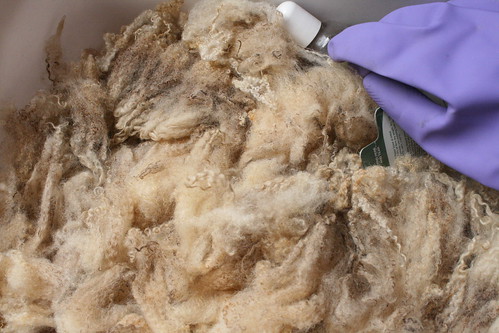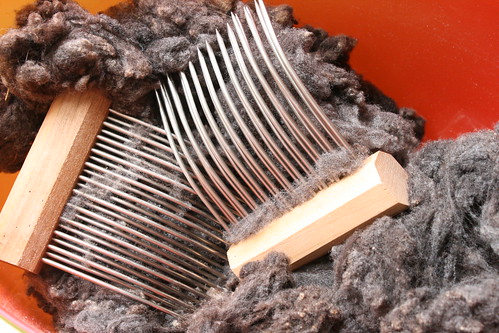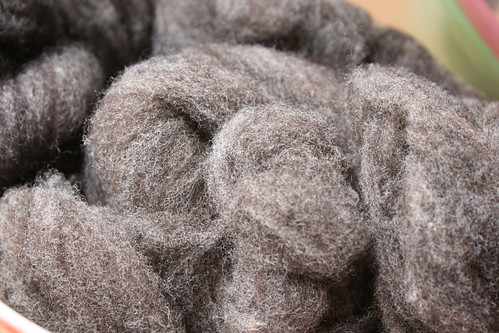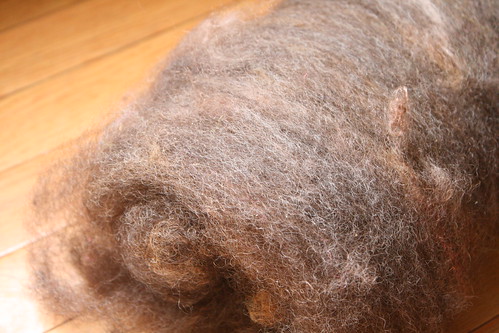
There's nothing quite like it; the call of the fleece, that is. You know it when you've been bitten by the fleecelove. It's so hard to resist. So maybe you've learned to spin and now you want to start from scratch. It's a great place to start! There's something so organic about starting with raw fleece. But, you might have some questions. I'm here for you.
Selecting a good fleece can be daunting if you don't know what to look for. Keeping a few key things in mind will make fleece selection easier. So let's say this is your first fleece. Awesome. For first-timers, fleece prep is much more rewarding if good quality medium wools are selected. I would recommend Corriedale, Romney, Finn- or something with a staple length of 3-4 inches for beginning spinners.

Fine wools like Merino, Cormo, or Rambouillet are much more time consuming to scour due to the the fine crimp and excess grease particular to finer wools. Obviously if you are looking for fleece with the utmost durability for weaving a rug, you'll want something coarse and with a long staple. But for our purposes here, let's assume you just want to jump into preparing a medium soft fleece for spinning a variety of yarns.
There are many reputable fleece sellers to be found on Etsy and Ravelry. Personally, I can't resist the pull of the fleece sales at festivals like Maryland Sheep and Wool Festival and Rhinebeck. It is important to me to really inspect my purchase. That being said, there are definitely online fleece suppliers I trust, but the ideas herein are geared more toward selecting your fleece in person.
If price matters, you can begin to narrow your selection down by pulling a few medium wool fleeces that are in your price range. Don't be surprised if you fall in love with fleece that is above your price range. That's practically a guarantee! Don't lose heart, though. Friends are often willing to go in together to split the cost of a prize fleece.
Once you have narrowed your selection, ask to examine the whole fleece by unrolling it. It should smell nice and sheepy. You don't want a musty smelling fleece. Here's what you're on the look-out for:
A skirted fleece in which all of the vegetable matter, dung tags, etc. has already been removed is ideal. However, many great quality fleeces have not been skirted. The key is to avoid buying a fleece with excessive amounts of vegetable matter or debris like burrs, hay, thorns, whatever barnyard riff-raff that finds it's tangled way into the fleece. If you don't have access to a picker for the removal of VM, expect to spend a lot of time removing debris by hand. You cannot card it out...carding just breaks up the VM and spreads it throughout the fleece! If you don't mind combing and want to prepare your washed fleece in a worsted fashion, then go for it. Just make sure the price reflects the condition of the fleece. You have the option to choose a fleece that has worn a coat to protect it from VM, but expect to pay more for a coated fleece.
Second cuts. You don't want a fleece with very short fibers left behind when the shearer makes a second pass after not shearing close enough the first time around. When fleece is sold by the pound, no need to pay for a bunch of unusable second cuts wrapped in.
While the fleece is still spread out, inspect a staple from several areas of the fleece to check its integrity. Look for relatively even crimp and unmatted locks. Give the locks a gentle tug. If the tips are weathered and break, you may want to avoid this fleece because the final yarn may show strains in the form of pilling.
Look for stains like canary stains caused by bacterial growth and combined secretions from the animal's oil and sweat glands. Canary stain will affect the color of the fleece more than the integrity. Bacterial overgrowth can be a factor in fleece rot and can be identified by green, blue, brown, even orange or pink discoloration.
Scurf is the presence of skin flakes in the fleece. Scurf is much more visible in dark fleeces. It looks like dandruff and is incredibly difficult, if not impossible, to remove. Steer clear of the scurf!
So there you go! Enough info to start diving in.
There's such beauty in natural fleece prepared by you!



Hopefully, these initial tips will have you well on your way to selecting your very own fleece! Maryland Sheep and Wool Festival, held May 5-6, 2012, has a terrific array of fleece to choose from. If you are ready to take the plunge, I invite you to consider joining a group of like minded fiber enthusiasts on Monday May 7th at the DragonFly Fiber Studios in Kensington, Maryland for the Fleece U workshop. Bring your fleece and we will hold your hand through the whole process from skirting and scouring to carding, combing and dyeing fleece. It's always a party at the clubhouse. Hope you join us! Details here!



Elizabeth, loved your post. I admit to loving the feel of all stages of the fiber process, but I probably am more comfortable with just letting these early steps be done by someone else. Like you and my cousin, Linda.
ReplyDeleteBut I still remember Linda's first fleece that she got at MSW - it was beautiful.
LOL - I just spent the weekend scouring some partial fleeces I had in my stash! I do find it very satisfying, the whole process. I love having fiber that I have taken from sheep to finished project! Great post Elizabeth!
ReplyDelete